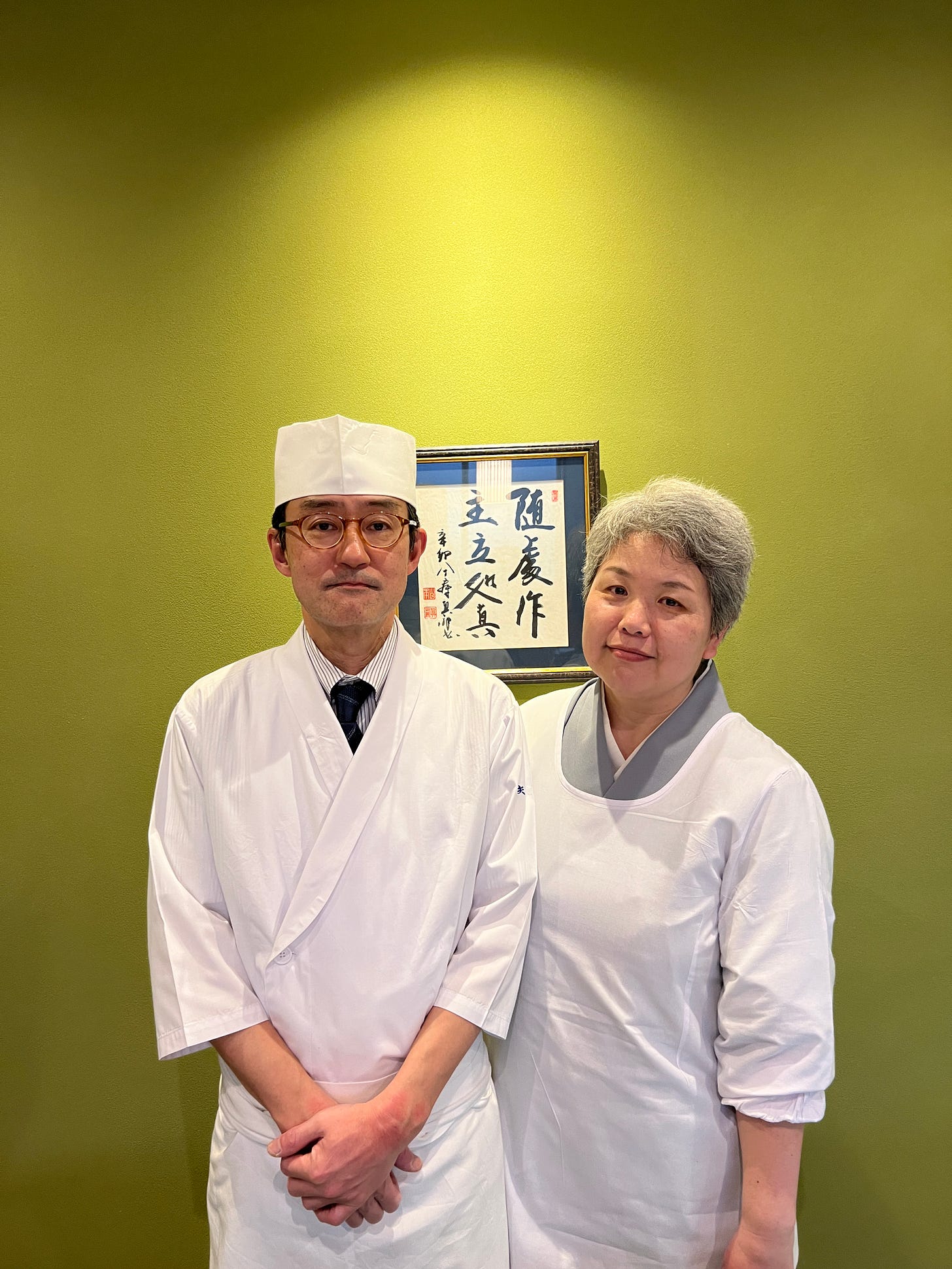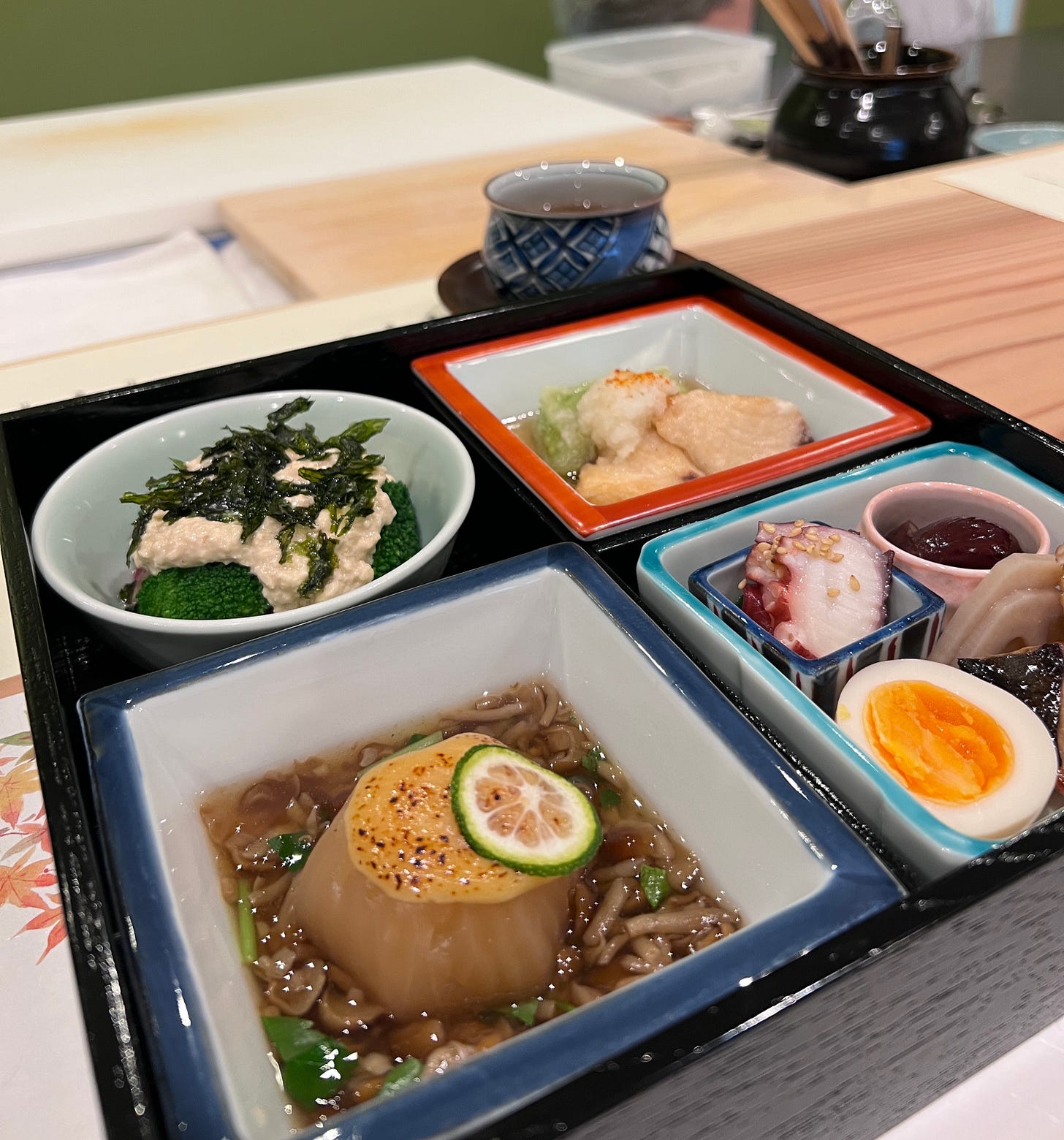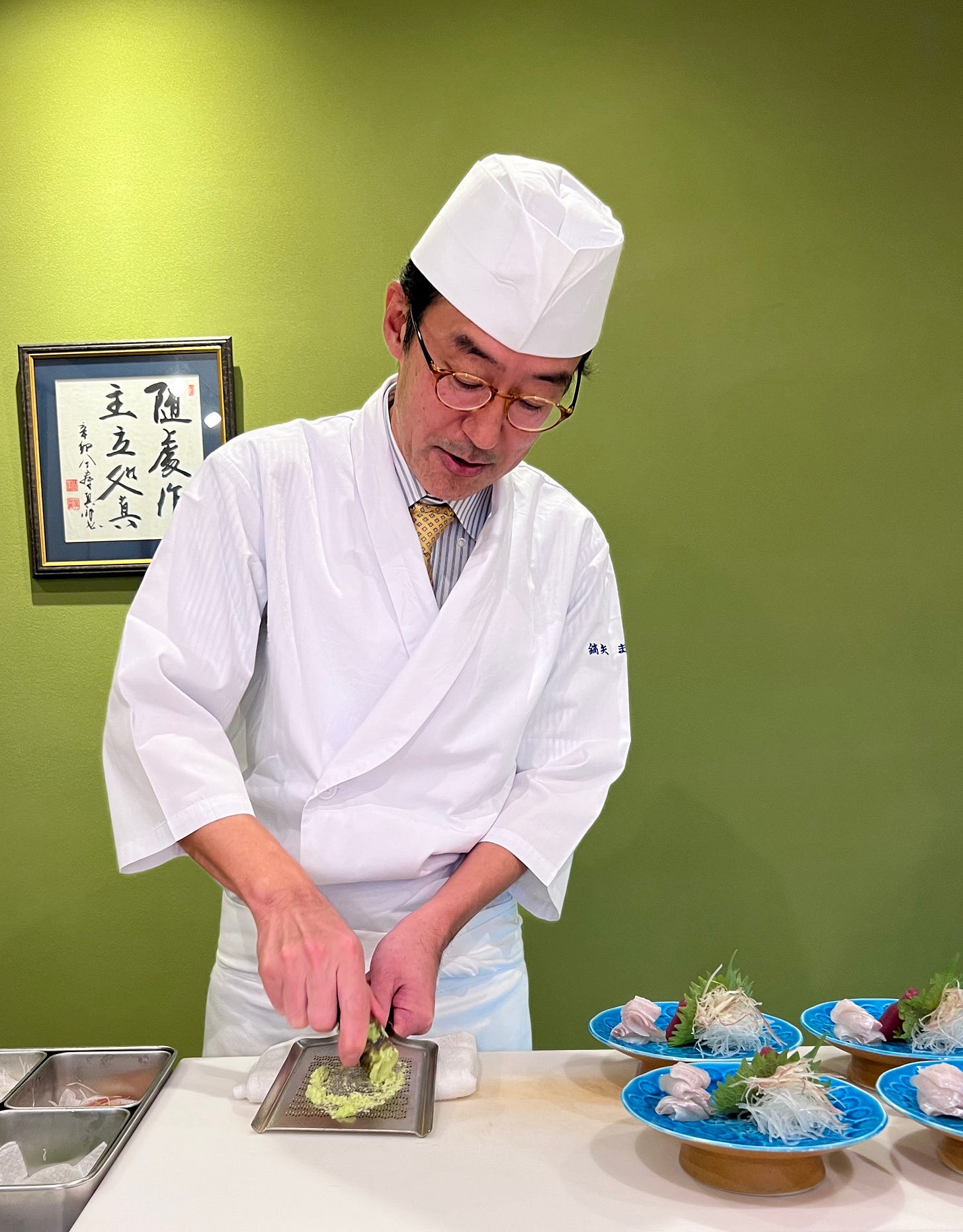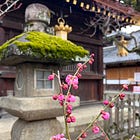Happy Spring Equinox 🌱 Through this new series, Conversations Mostly from Kyoto, I share insights from people I admire - women and men discovering their own paths, reimagining journeys, embracing the unknown. Their voyages, as expansive as any outward quest, are rooted in presence, depth, and ongoing discovery. I hope their journeys inspire you as profoundly as they have moved me.
See Instagram | See LinkedIn | See previous posts | About
#1 Conversations Mostly from Kyoto
Kaburaya Matsui 鏑矢 まつ井
Japanese cuisine is not just sushi, temaki, or teriyaki chicken but a delicate and slow process of removal to uncover the original taste of each ingredient - revealing a subtle simplicity mirroring the seasons and the soul of Japan.Kaburaya Matsui is a Kyoto-based kaiseki restaurant established in 2024 by Chef Riichiro Matsui and his wife Mika Matsui. With 32 years of overseas cooking experience across 10 countries, their journey is full of adventurous flavors and steeped in wisdom.
The restaurant serves up lunch and two dinner kaiseki course options, rooted in Kyoto’s shifting seasons and the 24 solar terms that shift every two weeks (see earlier post). These kaiseki courses reflect their journey - traditional techniques and time-honored flavors passed down through generations, fused with the skills and instincts sharpened across kitchens worldwide.
Twice, I have had the pleasure of joining them for cooking classes that combined lectures, tastings, and informative handouts with recipes - one on dashi tasting, a full sensorial experience, and another on shokado bento to explore the five senses, flavors, colors, and methods of Japanese cuisine (see earlier post).
There are two types of kaiseki cuisine: 1) Chakaiseki 茶懐石, originating in the 16th century with roots in Zen Buddhism, introduced by tea master Sen no Rikyū to prepare the stomach for thick matcha tea during tea ceremonies. 2) Kaiseki 会席, which emerged in the 17th century, during Edo period, evolving into a more elaborated meal for entertainment gatherings.

32 years overseas in 10 countries - and the return to Kyoto
Chef Riichiro Matsui and his wife Mika Matsui are from Aichi and Uji in Japan, respectively.
Chef Matsui got his start at Hotel Nikko, a Japan Airlines-run restaurant. His overseas career began in Düsseldorf, then Taipei, and Hanoi. It was in Hanoi that the married couple met, and as they say, the rest is history. Their journey with their two children continued to take them across continents - from Asia, the Middle East, to Europe - through a world of contrasts including countries like Malaysia, Bahrain, and Italy.
From the relentless work ethic in Vietnam to the laid-back pace of Italy, their time abroad shaped them in ways that go beyond the kitchen. The couple is deeply attuned to respecting the vast differences in cultures, religions, and lifestyles, knowing that every place has its own rhythm, its own soul.
Now, they have finally realized their long-held dream of opening their own restaurant in Kyoto - a melding of past experiences through hard-earned lessons and new beginnings, building on everything that came before, knitting into something entirely their own.
Good flavor takes time
The body instinctively understands from the taste of each dish, the time and care that has gone into its preparation. Dashi is the fundamental flavor in Japanese cuisine. From kaiseki to home cooking, it is typically used to bring out the natural flavors of ingredients - including umami, known as the fifth taste with savory depth found across many Japanese dishes. Generally, it is made by combining konbu or dried kelp seaweed, followed by katsuobushi or dried bonito fish flakes with regional variations.
The modern world is a whirlwind, constantly in motion, leaving us with less time to truly savor the moments.
By contrast, in the world of kaiseki, time slows down with thoughtful intention - each element meticulously crafted with artistry and mindfulness.
Take katsuobushi for example. Its preparation can take up to six months, involving more than 12 steps. This includes filleting the bonito fish, simmering it slowly for up to an hour, drying them repeatedly, delicate repairing of the dried fish through a cycle of ten times, fermenting and molding, then finishing with sun drying. Each step requires patience and precision.

Simplicity, seasonality, and the senses in Japanese cuisine
Japanese cuisine reflects a spirit of quiet restraint - a process of subtraction with no heavy spices nor overpowering sauces. Revealing the pure, clean, original taste of each ingredient, while tasting delicious. A seasoned chef knows that less is more, trusting in simplicity to create something extraordinary.Kaiseki is also a story about the seasons - told in colors, flavors, textures, and a feast for the five senses. It is nature on a plate.
Ingredients are always shun no mono 旬の物 - the freshest of the season, guided by the 24 solar terms that shift every two weeks (see earlier post). Each course, like a beautiful work of art, is served on carefully chosen tablewares, adorned with seasonal accents, where every detail is placed with thoughtfulness and intention.
In early Spring, for example, kaiseki dishes typically include bamboo shoots, shellfish, and mountain vegetables. While side dishes or dessert will likely be shaped as sakura cherry blossoms, a subtle nod to the season.
However, severe weather swings from climate change is threatening the reliable supply of key ingredients for Japanese cuisine, like konbu (dried kelp seaweed), with some experiencing significant reduction compared to last year. Unpredictable weather patterns have also adversely affected rice and vegetable yields, contributing to the overall increase in ingredient cost.
Keeping to the true taste of Japanese cuisine
A chef is a craftsman, someone who knows that the dish is not about showing off - it is about respecting the ingredients, the local culture, and letting the original taste of the ingredients shine. At Kaburaya Matsui, omotenashi is about serving high-quality food that speaks for itself and finding fulfillment in the quiet satisfaction of seeing customers who truly enjoy what is on their plate. It is about knowing when is enough and not about the chase to maximize profit. The real reward lies in the satisfaction of serving customers well and doing it with integrity.
Upon returning to Japan, the couple is saddened to see a fractured food scene in Kyoto - the birthplace of kaiseki. Some restaurants cracked under the lure of tourist dollars, rewriting menus to suit foreign palates, prioritizing profit over preserving the true taste of Japanese cuisine. Others turn inward, catering only to local customers, to those familiar with unspoken rules and fine etiquettes of Japan.
This polarized scene leaves little room for shared experiences between locals and foreigners, vital to the city’s evolving culinary soul.
Abroad, the couple also noticed that Japanese cuisine is often misunderstood - generally overly seasoned, overly colorful, and oilier, missing the subtlety at its core. Yet, there is a silver lining. Foreign tourists, including younger generations, are showing a greater interest and appreciation for kaiseki - sometimes even more than the Japanese themselves.

Enabling new connections
Tradition meets reinvention, without losing its soul.Mika Matsui-san, with her passion for knitting, is now working towards becoming a qualified knitting teacher. And once a month, the restaurant is opened up as a haven for knitting lovers, a space where kindred spirits gather to knit and share stories - where community is built.
To invite fresh energy, the restaurant also hosts various other events. Last year, a Christmas kaiseki gathering was held to connect with younger Japanese in the community. Soon, a mini kaiseki and chakabuki (Japanese tea-tasting game) event that has been fully booked will take place, merging tradition with innovation.
Keeping to the true spirit of Kaburaya Matsui, Chef Riichiro Matsui and Mika Matsui-san will continue to push boundaries, blending tradition with a modern touch, while staying true to the simple, time-honored local culture and flavors that have always defined the essence of Japanese cuisine.
For more information
Kaburaya Matsui in Kyoto, between Bukkoji-dori and Aburanakoji-dori
In case you missed it, see previous post:





They make a cute couple. He's so formal, she looks more fun.🙂 and the food looks amazing of course.